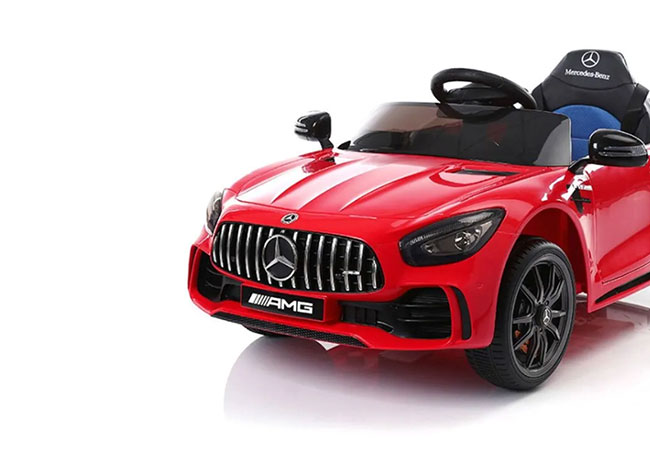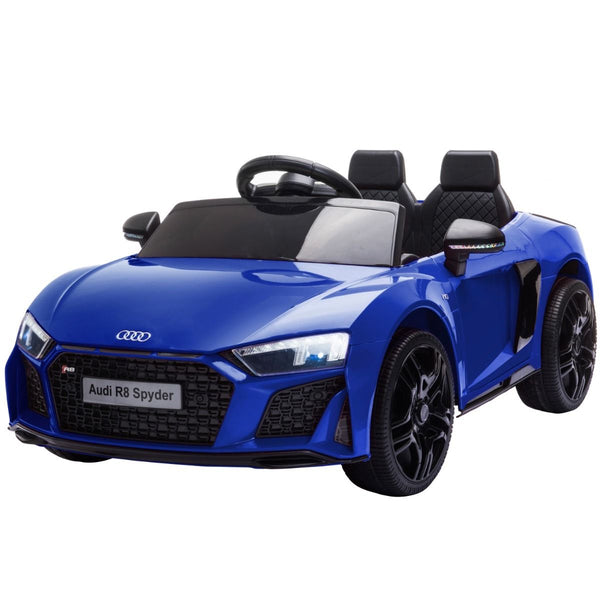New Facts For Choosing Kids Ride On Cars
New Facts For Choosing Kids Ride On Cars
Blog Article
What Ride-On Car Features Should I Look At? Pros And Pros And
To ensure your child's safety You should think about the following safety features. Seat Belts are one of the most essential safety features that you should take into consideration.
Pros - Seatbelts keep your child inside the ride-on vehicle, reducing chances of them falling off or getting thrown out of the vehicle when playing. Seat belts provide an additional layer to protect your child when turning around and during abrupt stops.
Pros - Some ride-ons vehicles, especially those intended for children don't have seat belts. Belts for seats can be uncomfortable for children, causing them to be resistant or unwilling to wear it.
Sturdy Construction
Pros: A durable ride-on vehicle with high-quality components will last for longer and is less likely to fail. This guarantees safety and reliability. It can stand up to all challenges of playing and offer stability.
Pros - Sturdy materials are often expensive and might not be feasible for certain families. Additionally, the weight of the materials can affect the mobility and maneuverability.
Low Center Of Gravity
Ride-on cars with a low center gravity tend to be less likely than others to tip over, which could reduce the chances of injuries and accidents. They provide greater stability and stability during turns or maneuvers.
Pros - Ride-on vehicles that have a low centre of gravity can sacrifice off-road capabilities or the clearance of their ground, which limits their versatility.
Parental Remote Control
Pros - Parents are able to supervise their children's activities and offer assistance, ensuring safety and control. Parents can intervene in order to prevent accidents, navigate through difficult terrain, and help their child in an emergency situation.
Cons - Parental remote control can limit children’s autonomy and independence, as they heavily rely on parental supervision and assistance while playing. Furthermore, remote-controlled models can cost more than ride-on vehicles that are manual.
Speed Limiters Speed Limiters
Pros - Ride-on cars with speed limiters or variable speed settings let parents control the maximum speed of the car which reduces the chance of accidents or collisions. They are able to increase the speed slowly as a child develops confidence and skills.
Cons - Children could rapidly outgrow their slower speeds. This can cause frustration or even dissatisfaction. Additionally the speed limiter might not be included in all models. Or it may require an additional feature or accessory.
Safe Start Technology -
Pros - Safe Start technology ensures that the ride-on car can stop and start smoothly, minimizing the risk of sudden jerks or lurches that can frighten or even destabilize the child. It offers a more comfortable and safer riding experience.
Cons – Ride-ons that come equipped with safe-start technology are more costly. Additionally, some children may find the gradual acceleration or deceleration to be less thrilling or exciting than quick stops and starts.
Visibility Enhancements
Pros: Ride-on cars with enhanced visibility such as taillights and headlights that use or reflective materials can increase visibility even in dimly lit or low-light conditions. They increase safety by increasing the visibility of vehicles towards pedestrians and other vehicles.
Cons - The addition visibility features may make it more difficult for battery to drain or in the ride-on vehicle's design. These issues can cause problems or issues with maintenance.
By considering these safety features and considering their pros and cons you can select a ride-on car that prioritizes your child's safety while providing the most enjoyable and enjoyable playing experience. Have a look at the top remote control childrens cars for website examples including childrens electric cars, toy a car, childs ride on car, remote control childrens car, two seater childrens electric cars, car toy toy, childrens electric ride on, remote control childrens electric cars, riding digger, ride electric car and more. . 
What Is The Reason And How Can Electric Ride-On Vehicles Accommodate Different Levels Of Expertise?
The electronic ride-on vehicles typically have multiple speeds, as well as control options. These are designed to accommodate different levels of ability and make sure that children have a safe experience. These features are designed for safety and enjoyment.
Different children are at different levels of ability and confidence in driving in ride-on vehicles. Parents can adapt the maximum speed of the ride-on car to their child's capabilities by providing a range of speeds. This decreases the likelihood for accidents and collisions.
Children who are just beginning or learning to drive ride-on cars will benefit from lower speed settings, while older children and those with more experience can use more speed settings.
Gradual Learning Curve -
With a range of speeds, electric ride-on cars help youngsters develop their driving skills slowly. Beginning at slower speeds allows beginners to familiarize themselves with the controls and gain confidence before moving to higher speeds.
Parents are able to gradually increase the speed of their child as they become more proficient at driving, creating an elation and progress.
Parental Control
Some electric ride-on cars come equipped with parental control options that permit parents to restrict the maximum speed of their vehicle remotely. This feature provides parents with peace of mind knowing that they are able to alter or modify the speed to ensure their child's safety.
The model you choose will determine parental control options may include remote speed limits and emergency stop buttons, or remote steering capabilities.
Adaptability
As children grow, so can their interest and abilities. The electric ride-on car that has multiple speeds offers flexibility and adaptability to these changes.
As kids develop confidence and skills, they can graduate to higher speed settings for an exciting and challenging adventure. In the reverse direction parents may reduce the speed for children who are younger or friends.
Customization
Multiple speed settings permit flexibility and customization depending on the individual's preferences and preferences. The speed can be adjusted depending on the child's needs and level of enthusiasm.
Some electric ride-on vehicles have additional control options like variable braking, or acceleration sensitivity. This enables the driver to tailor their experience according to individual needs.
Overall, electric ride on cars that have multiple control and speed options offer the safety, flexibility and customizable experience for children. It is the same regardless of age, abilities or personal preferences. These features help build confidence, skill-development, and fun adventures, and allow parents to monitor and intervene if necessary. Take a look at the most popular read this on McLaren kids car for website examples including ride ons, kids electric cars, toy with car, childrens electric cars, childrens electric cars, race car toy car, a toy car, toy toy cars, ride ons, toy cars and more. . 
What Are The Different Kinds Of Remote Controlled Kids Cars? What Are The Pros And Cons Of These Vehicles?
Remote control cars for kids are also referred to remote controlled cars or RCs. They come in a range of designs, prices and sizes to meet all budgets and tastes. This article provides an overview of the different types sizes, styles and prices of children's remote control cars and their pros and cons.
Electric RC Cars – These are remote-controlled, battery-powered cars that can be operated indoors and out. They are available in a variety of styles like buggies, trucks and sports cars.
Nitro RC Cars – Gas-powered remote controlled vehicles that have higher performance and speeds however, more maintenance and expertise is required to operate. Electric RC cars are smaller and cost less.
Scale Models: Remote-controlled replicas including real vehicles such as cars, planes, trucks and boats. Scale model sizes range from 1-10 to 1--24. The larger models provide greater quality and greater real-world realism.
Sizes -
Remote control children's cars come in various sizes, from small miniature models to huge-scale replicas. Size can influence the performance of a vehicle, its speed, and the handling characteristics.
Smaller cars that are light and compact, are great for indoor use and also by children who are younger. Models with larger scales offer more power and durability and therefore are ideal for off-road and outdoor racing.
Prices
The cost of a remote control car for children is dependent on the size of the vehicle, its features, manufacturer and build-quality.
Electric and Nitro RC vehicles in larger scale can cost between $100 and $500.
Scale models, high-end hobby RCs range between several hundred dollars to more than $1,000 based on the level of detail and the performance.
Pros and Cons
Pros -
Entertainment - Children's remote control cars can provide hours of fun and entertainment for both children and adults.
Skill Development: Operating an RC vehicle aids in the development of spatial awareness, hand-eye coordination and problem-solving skills.
Social Interaction. Cars with RC encourage social interaction, and can be enjoyed by friends and families.
Aftermarket parts, upgrades, accessories and other products from the aftermarket can be used to modify numerous RC cars and increase their performance.
Cons
Cost – A remote-controlled car for children with advanced features or even hobby model cars can cost a lot.
Learning Curve - Operating an RC car requires practice and expertise, and smaller children might struggle when it comes to the controls at first.
Maintenance - Cars with RC engines require regular maintenance, including cleaning, lubrication and periodic repairs or replacement of parts.
Safety Concerns - RC vehicles can present safety risks, including accidents, falls, as well as electrical dangers, if not operated with caution and under the supervision of an adult. supervision.
In general, remote-controlled kids' vehicles can be an enjoyable and educational experience for children of all ages. However, when deciding on the best model for your child, you should consider things like the price dimensions, size, features, and security. Hobby-grade RC cars may be best for older kids or people who enjoy. Less complicated models are better for beginners and younger children. Check out the best McLaren kids car for blog recommendations including toy a car, electric rideons, electric two seater cars, toy the car, car for toy, ride electric car, electric ride on, lambo toy car, car toy car toy, electric two seater cars and more. .